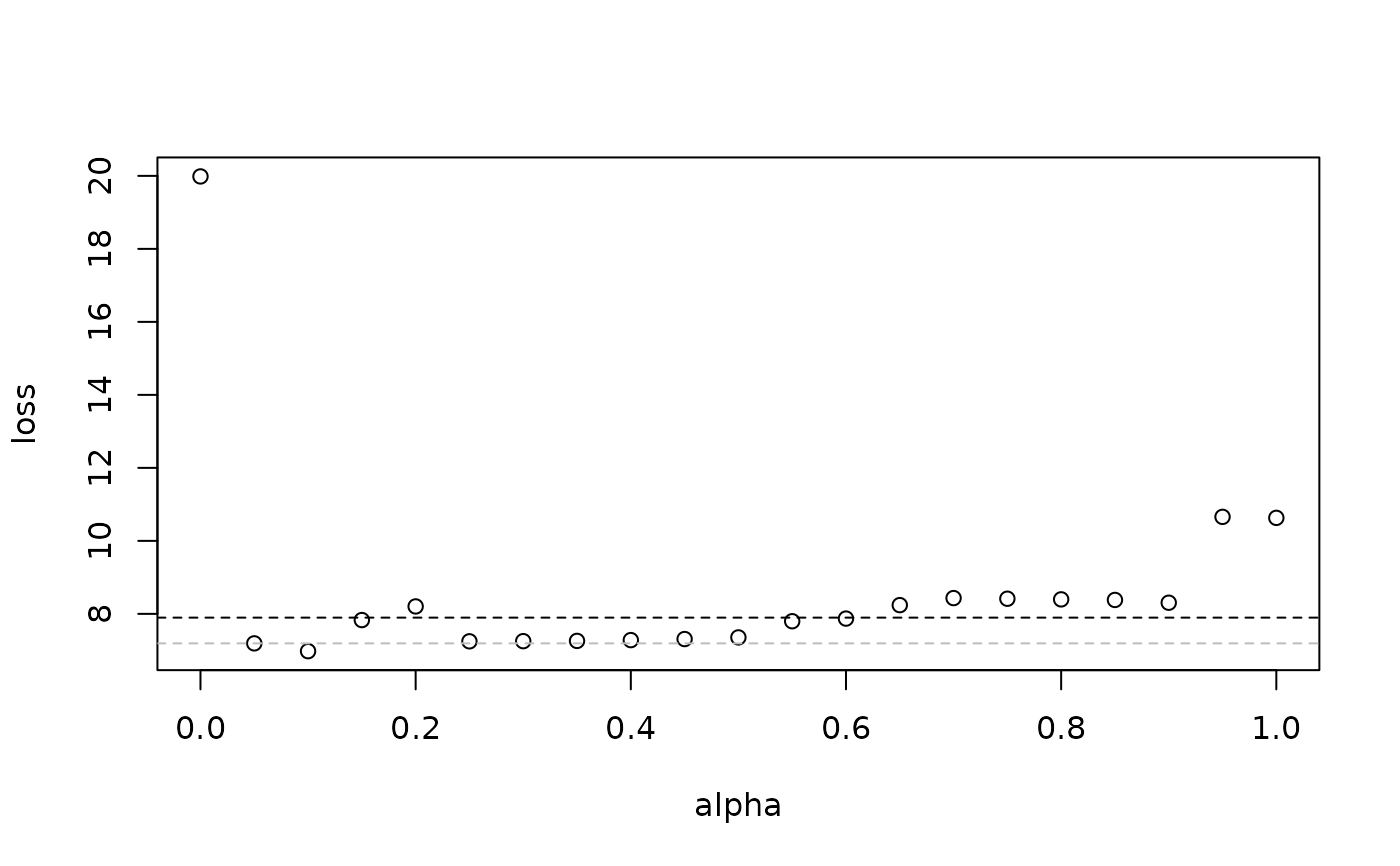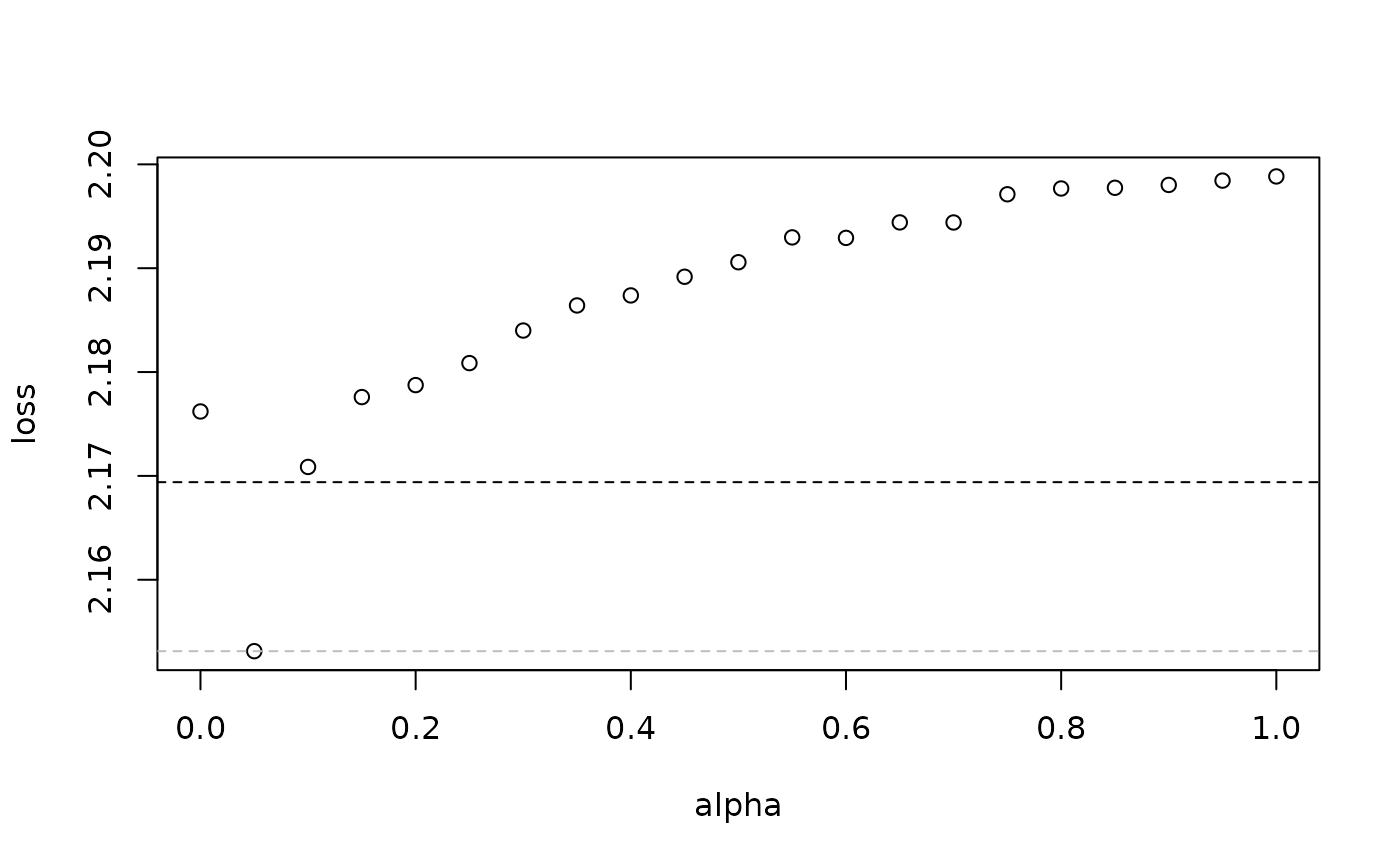Compares stacked elastic net, tuned elastic net, ridge and lasso.
cv.starnet(
y,
X,
family = "gaussian",
nalpha = 21,
alpha = NULL,
nfolds.ext = 10,
nfolds.int = 10,
foldid.ext = NULL,
foldid.int = NULL,
type.measure = "deviance",
alpha.meta = 1,
nzero = NULL,
intercept = NULL,
upper.limit = NULL,
unit.sum = NULL,
...
)Arguments
- y
response: numeric vector of length \(n\)
- X
covariates: numeric matrix with \(n\) rows (samples) and \(p\) columns (variables)
- family
character "gaussian", "binomial" or "poisson"
- nalpha
number of
alphavalues- alpha
elastic net mixing parameters: vector of length
nalphawith entries between \(0\) (ridge) and \(1\) (lasso); orNULL(equidistance)- nfolds.ext, nfolds.int, foldid.ext, foldid.int
number of folds (
nfolds): positive integer; fold identifiers (foldid): vector of length \(n\) with entries between \(1\) andnfolds, orNULL, for hold-out (single split) instead of cross-validation (multiple splits): setfoldid.extto \(0\) for training and to \(1\) for testing samples- type.measure
loss function: character "deviance", "class", "mse" or "mae" (see
cv.glmnet)- alpha.meta
meta-learner: value between \(0\) (ridge) and \(1\) (lasso) for elastic net regularisation;
NAfor convex combination- nzero
number of non-zero coefficients: scalar/vector including positive integer(s) or
NA; orNULL(no post hoc feature selection)- intercept, upper.limit, unit.sum
settings for meta-learner: logical, or
NULL(intercept=!is.na(alpha.meta),upper.limit=TRUE,unit.sum=is.na(alpha.meta))- ...
further arguments (not applicable)
Value
List containing the cross-validated loss
(or out-of sample loss if nfolds.ext equals two,
and foldid.ext contains zeros and ones).
The slot meta contains the loss from the stacked elastic net
(stack), the tuned elastic net (tune), ridge, lasso,
and the intercept-only model (none).
The slot base contains the loss from the base learners.
And the slot extra contains the loss from the restricted
stacked elastic net (stack), lasso, and lasso-like elastic net
(enet),
with the maximum number of non-zero coefficients shown in the column name.
Examples
 # \donttest{
loss <- cv.starnet(y=y,X=X)# }
# \donttest{
loss <- cv.starnet(y=y,X=X)# }
